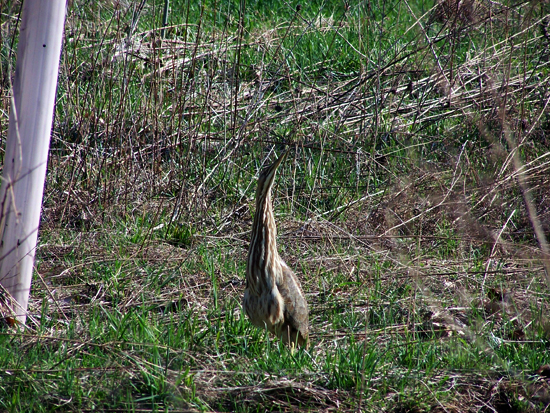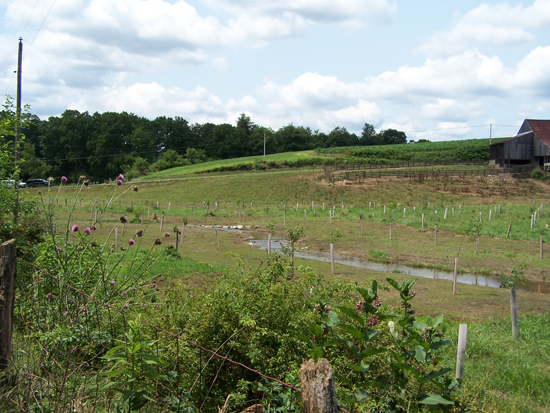Tributary Tuesday: Pierceville Run (York County, Pa.)
The rare American bittern has been seen on the shores of this once-impaired tributary to the Susquehanna River.
Imagine walking or paddling along your favorite stretch of marshland and coming across something hiding in the grass. It's three feet tall and its wings, which open when it sees you, span an impressive four feet across.
The creature is an American bittern, a rare heron with distinguishing moustache-like cheek markings and a talent for blending in with marsh grass.
Such a sighting is unusual; the American bittern is listed as endangered in Maryland and Pennsylvania. So we were surprised to hear that these birds were seen along Pierceville Run, a Susquehanna River tributary that was added in 2002 to Pennsylvania's list of impaired waters and removed just earlier this year.
An American bittern on the banks of Pierceville Run. Image courtesy Pennsylvania Department of the Environment
The American bittern's wetland habitats have declined by as much as 50 percent over the last two centuries, due to sediment pollution, development and an excess of man-made pollutants being pushed into the water.
How did Pierceville Run go from an "impaired" waterway to the home of an endangered bird?
Pierceville Run was listed as impaired because it contained an excessive amount of sediment pollution. In other words, there was too much dirt in the water.
Sediment pollution can cloud water and prevent sunlight from reaching aquatic plants and animals. It can even block the flow of creeks, streams and other waterways.
In agricultural areas, like the Pennsylvania county where Pierceville Run is located, livestock can often cause sediment pollution. When cattle are allowed to run through a stream, they can take portions of the stream bank with them. This can lead to the erosion of stream banks and to excessive sediment in the water.
Another source of sediment is the clearing of land for development. When soil is no longer home to trees and plants whose roots can hold it in place, it loosens and can end up in nearby waterways, especially after a severe storm.
To curb Pierceville Run's sediment problems, partners restricted livestock from entering streamside areas and installed trees along the banks to hold the soil in place.

Image courtesy Pennsylvania Department of the Environment
More from Pierceville Run:
- Pierceville: More than just farms! A proposed Historic Agricultural District in the Pierceville Run vicinity is being nominated to the National Register of Historic Places by the Pennsylvania Agricultural History Project. Read the stories of some of the family farms involved in the project.
- Visit a nearby farm. You can pick up organic produce, dress up as a fairy and even star-gaze at the Spoutwood Educational Farm and Observatory in Glen Rock, Pa.
- Learn more about the Pierceville Run project from the U.S. Environmental Protection Agency.

Comments
There are no comments.
Thank you!
Your comment has been received. Before it can be published, the comment will be reviewed by our team to ensure it adheres with our rules of engagement.
Back to recent stories